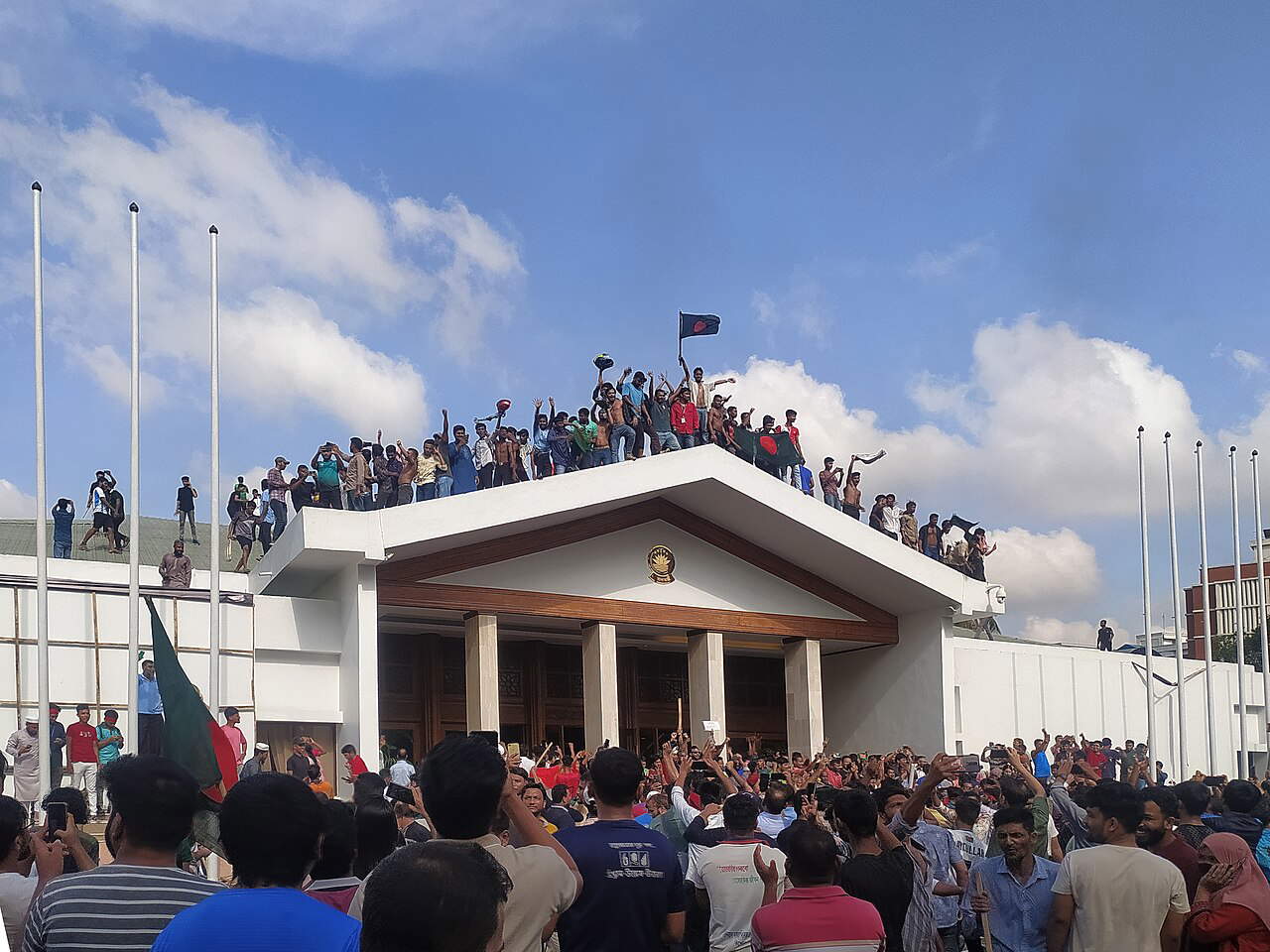Anti-government protests in Bangladesh have also taken a toll on museums, which have suffered and continue to suffer devastation and vandalism since the movement rose up. What is happening in the Asian country? Last June, university students in the country began a series of demonstrations in the wake of a decision by the Bangladesh Supreme Court regarding quotas for recruiting staff of government agencies, a dedcision that protesters say would limit opportunities for deserving candidates. The protest thus began as a movement against the reform of the quota system for jobs in government agencies, and later, due to the crackdown by the Bangladeshi government, expanded and became a protest against the government. Between June 6, when the demonstrations began, and August 4, the day on which Prime Minister Sheikh Hasina (in office since 2009, considered an authoritarian premier and held responsible for a gradual and consistent erosion of democracy) resigned, clashes between protesters and police claimed between 300 and 400 lives among anti-government demonstrators, 12 deaths among supporters of the Awami League (the premier’s party), 5 among law enforcement officersorder, 20 thousand injured among protesters and more than 1,000 among security forces. Among the victims were children, as well as two activists: Abu Sayed, a 25-year-old student killed on July 16 when police opened fire to disperse protesters in front of Begum Rokeya University, and Mir Mugdho, his age, who was killed on July 18 while distributing water bottles and cans of cookies to protesters by a bullet that struck him in the head during a confrontation.
Museums have been among the victims of the protest. One of the hardest hit institutions was the Bangabandhu Memorial Museum, located in the capital city of Dhaka: it was the residence of Sheikh Mujibur Rahman, known as “Bangabandhu” (“Friend of Bengal”), a politician and revolutionary considered the founder of the country (he was, moreover, the father of the resigned prime minister). The museum was set ablaze by mobs on August 5, its interior ransacked and largely devastated by the fire, which also claimed four lives. Still on Aug. 15, moreover, protesters were preventing access to the museum. The museum set up in the former residence of Bangladesh’s first head of government was the one that suffered the most damage, given also its ties to the family of the Bengali prime minister, but other institutions were also affected by theft and damage. These include the Shashi Lodge in the city of Mymensingh, residence of the maharaja during British rule, where a sculpture and cloisters were vandalized (as reported by Prothom Alo, the most circulated in the country, which heard from the curator of the lodge museum), and then again Sheikh Russel Park in Rangunia, which was heavily looted for two consecutive days (employees were beaten and even animals were taken away), and numerous monuments throughout the country.
ICOM, the International Committee of Museums, the body representing museums around the world, was forced to intervene twice, first with a brief note from the Bengali committee on Aug. 6 and then with another statement on Aug. 23. “ICOM,” reads the latter, “expresses deep concern about the ongoing crisis in Bangladesh, which has led to the destruction of priceless heritage sites and museums. ICOM Bangladesh’s reports of arson, vandalism, and deliberate damage to important institutions such as the Independence Museum, Bangabandhu Memorial Museum, Genocide Museum, Shashi Lodge, Sunamgonj Heritage Museum, and other historical monuments have prompted urgent calls for action. These acts of destruction threaten the physical existence of our museums, historical documents and archaeological sites. [...] Our cultural heritage is an integral part of our national identity, shaping who we are and how we are recognized on the world stage. UNESCO’s recognition of several Bangladeshi sites as World Heritage Sites testifies to their universal value. [...] ICOM supports ICOM-Bangladesh’s call for all citizens to recognize that protecting these irreplaceable assets is a moral, personal and national responsibility. The preservation of cultural heritage is a collective obligation that requires the active involvement of every individual. As the declaration emphasizes, the protection of cultural heritage is essential not only to preserve our past, but also to promote peace, recovery and the reconstruction of society. The ICOM network stands ready to offer its assistance to affected museum professionals in Bangladesh, putting them in touch with experts so that they can take stock of the damage sustained and take the next steps to reopen to the public wherever possible. In these difficult times, we urge everyone to come together to safeguard museums, historic sites and archives.”
Currently, a new interim government led by economist Muhammad Yunus, a 2006 Nobel Peace Prize winner, is in place in Bangladesh. And the country is seeking a slow return to normalcy.
Image: protesters besiege the Bangladesh prime minister’s office after his resignation, Aug. 5, 2024. Photo: Joni Hossain
 |
| Bangladesh museums devastated during protests. ICOM intervenes |
Warning: the translation into English of the original Italian article was created using automatic tools. We undertake to review all articles, but we do not guarantee the total absence of inaccuracies in the translation due to the program. You can find the original by clicking on the ITA button. If you find any mistake,please contact us.